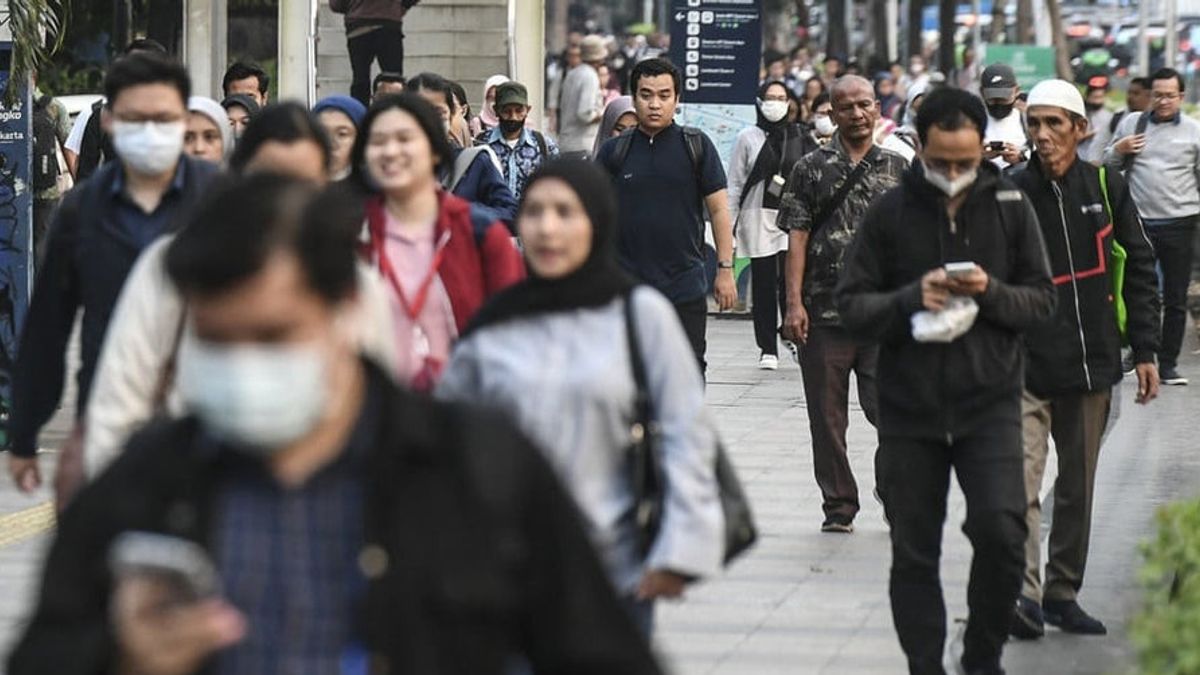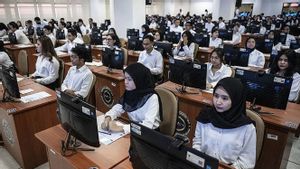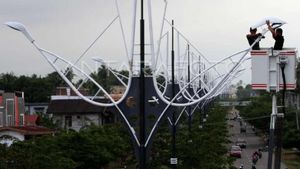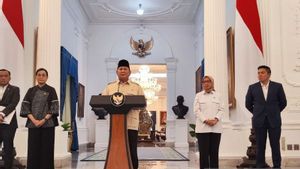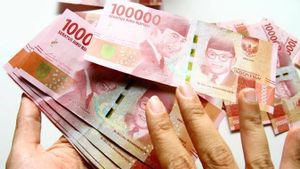JAKARTA The phenomenon of continuing to decline in the middle class in Indonesia should be the government's attention. Otherwise, the number of middle classes is increasingly eroded and has the potential to present new poor groups.
Currently, the middle class is in the spotlight because the number continues to decline. According to data from the Central Statistics Agency (BPS), the middle class is individuals with expenditures of IDR 2.04 million to IDR 9.9 million.
Still from the same data, the number of middle class in Indonesia in 2024 is 47.85 million people or about 17.13 percent of the total population of Indonesia. The number of middle classes has continued to take care of in recent years, especially before the COVID-19 pandemic.
When compared to 2019, the middle class portion was still 21.45 percent or 57.33 million people and then decreased to 19.82 percent (53.83 million people) in 2021.
Economist from the University of Indonesia, Fithra Faisal Hastiadi, hopes that the government will make policies that are pro to the middle class, so that the numbers do not continue to decline. Because, the middle class is referred to as the support of the Indonesian economy.
Acting Head of BPS Amalia Adininggar Widyasanti detailed the middle class group in Indonesia by age group. The majority of the middle class are Gen X (born in the 1965-1980 period) at 24.77 percent. Millennial generation (born in 1981-1996) occupies second place with a percentage of 24.60 percent, followed by Gen Z (born in 1997-2012) at 24.12 percent.
On the other hand, the population to the middle class has increased from year to year. During the COVID-19 pandemic, the number of people in this category was 128.85 million people or around 48.20 percent of the total population. Then in 2023, the number was recorded at 136.92 million people or 49.47 percent of the total population. Now, the number has risen again to 137.5 million people or 49.22 percent.
"Aspir middle class in the category is a community group whose expenditure is between 1.5 to 3.5 times the poverty line. If the expenditure is 1 to 1.5 times the poverty line means vulnerable to poverty," said Amalia.
The COVID-19 pandemic is said to have played a major role in reducing the number of middle class in Indonesia. This was marked by the large number of middle class citizens who lost their jobs or switched to the informal sector. The middle class, which was previously economically stable, is now becoming more vulnerable.
Economist from the University of Indonesia, Fithra Faisal Hastiadi, agrees with this phenomenon. However, according to him, the pandemic is not the only factor that causes a decline in the number of middle class.
SEE ALSO:
Middle class groups continue to drop their numbers from year to year due to the unstrong economic structure. This, said Fithra, can be seen from the contribution of the weak manufacturing sector, causing high layoffs (PHK) and the decline in the contribution of the sector to Gross Domestic Product or GDP.
"We are experiencing a symptom called deindustrialization. This means that the industry does not grow, tends to fall, so that employment opportunities are limited," said Fithra.
Middle class people who work in the formal sector have continued to decline over the past five years. In 2019, the number was 61.71 percent but fell to 58.65 percent in 2023.
According to Fithra, since the pandemic, the number of workers in the formal sector has decreased because more and more people have resigned or left the informal sector. Those who work in the informal sector generally have relatively low wages. Likewise with the growth of their wages. This is not an ideal condition when compared to the increase or relatively higher price change.
In addition, workers in the informal sector are also more vulnerable to economic shocks. When there is a shock, they have to spend their savings to ensure they can survive. At the same time, not all middle class groups who work in the informal sector get social security, in the form of labor insurance, health, or assistance from the government.
Big challenges must be faced by the middle class in Indonesia to maintain and improve their economic conditions in the future. Most of their income also runs out for daily needs and this has an impact on the difficulty of saving.
In fact, the savings owned have also eroded in order to meet the increasing needs. This phenomenon is reflected in data showing that the average group savings with less than IDR 100 million is only IDR 1.9 million as of April 2024. Whereas seven years ago, this group had an average savings of IDR 3.4 million in December 2017.
This downward trend shows that it is increasingly difficult for the middle and lower class to maintain financial stability.
In the midst of airy middle class conditions, government policies are also considered to make life more difficult for this group. One of them is the increase in Value Added Tax (VAT) to 12 percent which is planned to be implemented starting January 1, 2025.
Although it aims to increase state revenue so that it can be spent on productive things, the increase in VAT will increase the burden on the middle class so that it has the potential to reduce purchasing power.
In fact, the middle class has been considered the backbone of the Indonesian economy. The decline in the middle class means a decrease in purchasing power and consumption so that it can increase national economic growth.
As a middle ground, according to Fithra, the government can carry out several pro-to-middle class policies. Starting from short-term to long-term efforts.
According to BPS data, the largest expenditure for middle class groups is taxes. For this reason, it is better to postpone this VAT until the number of middle class 25 percent is only increased," said Fithra.
In the long term, the government can also open up as many formal sector job opportunities as possible. Thus, the absorption of labor can be more.
Fithra hopes that the government will pay more attention to the middle class groups who are currently being eroded, because on the one hand this group is under pressure from the economy, but on the other hand it is not among the groups that deserve social assistance such as poor groups.
This middle class group does not need social assistance, but a decent job field so that it can have better income. There needs to be structural policies to get out of this trap. Otherwise, the economic situation could get worse," he concluded.
The English, Chinese, Japanese, Arabic, and French versions are automatically generated by the AI. So there may still be inaccuracies in translating, please always see Indonesian as our main language. (system supported by DigitalSiber.id)
